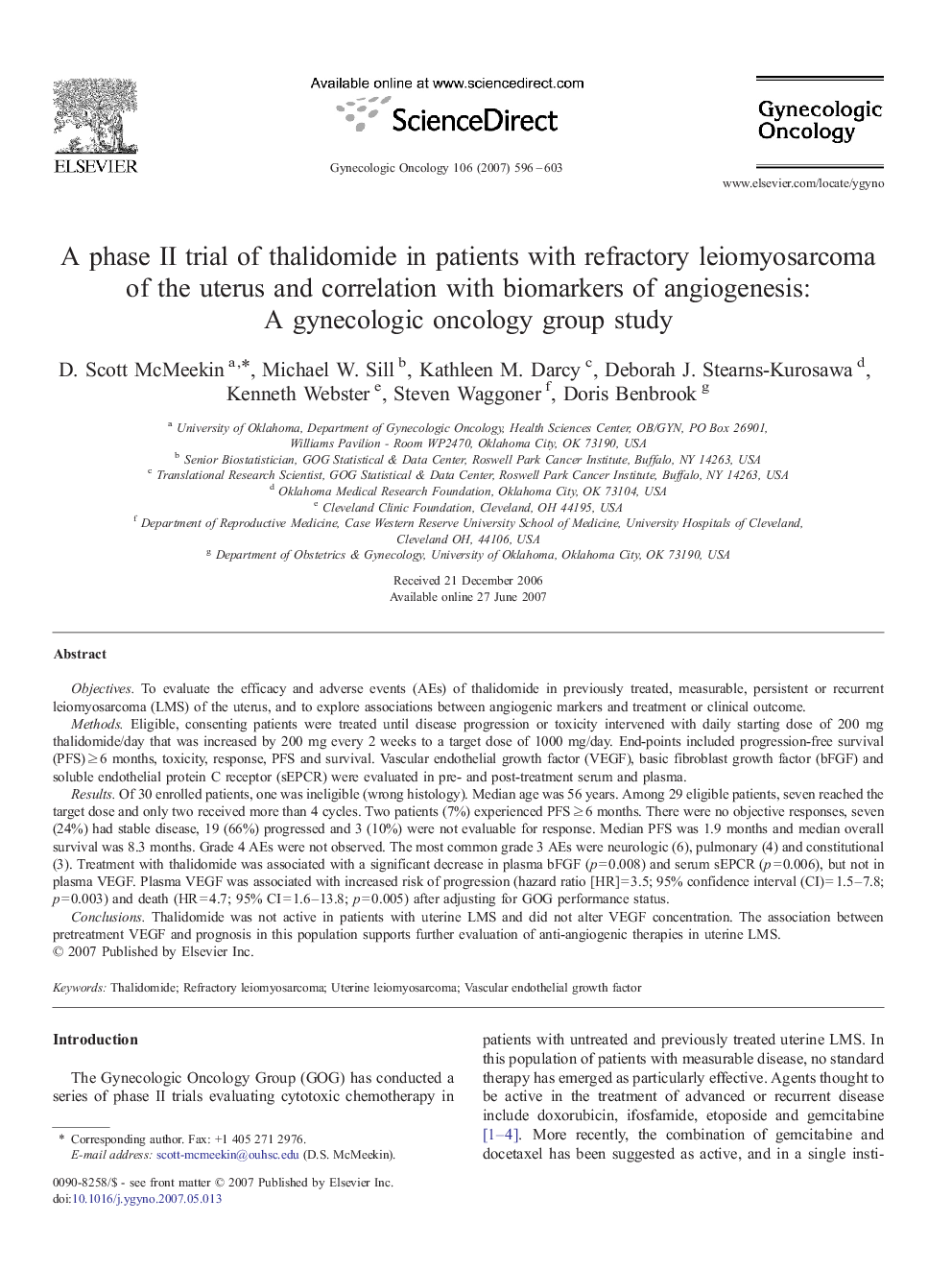| کد مقاله | کد نشریه | سال انتشار | مقاله انگلیسی | نسخه تمام متن |
|---|---|---|---|---|
| 3946400 | 1254337 | 2007 | 8 صفحه PDF | دانلود رایگان |

ObjectivesTo evaluate the efficacy and adverse events (AEs) of thalidomide in previously treated, measurable, persistent or recurrent leiomyosarcoma (LMS) of the uterus, and to explore associations between angiogenic markers and treatment or clinical outcome.MethodsEligible, consenting patients were treated until disease progression or toxicity intervened with daily starting dose of 200 mg thalidomide/day that was increased by 200 mg every 2 weeks to a target dose of 1000 mg/day. End-points included progression-free survival (PFS) ≥ 6 months, toxicity, response, PFS and survival. Vascular endothelial growth factor (VEGF), basic fibroblast growth factor (bFGF) and soluble endothelial protein C receptor (sEPCR) were evaluated in pre- and post-treatment serum and plasma.ResultsOf 30 enrolled patients, one was ineligible (wrong histology). Median age was 56 years. Among 29 eligible patients, seven reached the target dose and only two received more than 4 cycles. Two patients (7%) experienced PFS ≥ 6 months. There were no objective responses, seven (24%) had stable disease, 19 (66%) progressed and 3 (10%) were not evaluable for response. Median PFS was 1.9 months and median overall survival was 8.3 months. Grade 4 AEs were not observed. The most common grade 3 AEs were neurologic (6), pulmonary (4) and constitutional (3). Treatment with thalidomide was associated with a significant decrease in plasma bFGF (p = 0.008) and serum sEPCR (p = 0.006), but not in plasma VEGF. Plasma VEGF was associated with increased risk of progression (hazard ratio [HR] = 3.5; 95% confidence interval (CI) = 1.5–7.8; p = 0.003) and death (HR = 4.7; 95% CI = 1.6–13.8; p = 0.005) after adjusting for GOG performance status.ConclusionsThalidomide was not active in patients with uterine LMS and did not alter VEGF concentration. The association between pretreatment VEGF and prognosis in this population supports further evaluation of anti-angiogenic therapies in uterine LMS.
Journal: Gynecologic Oncology - Volume 106, Issue 3, September 2007, Pages 596–603